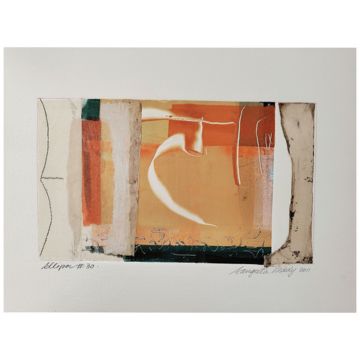New Media Art vs. Traditional Art: What’s the Difference?

New Media Art and Traditional Art: How Are They Different?
In the stillness of a gallery, time seems to freeze. You might be standing before an oil on canvas from centuries gone by, the smell of varnish transporting you to an earlier time. Or perhaps, in the room next door, you're surrounded by a moving digital image, immersed in soundscapes and flashing light. These two experiences, one steeped in history, the other pulsating with technology , capture the evolving dialogue between traditional art and New Media Art.
At Kadari Art Gallery, this conversation is an easy one. Here, a single step can take you from brushstrokes applied decades ago to pieces that shift in the moment, inviting you to be viewer and participant. It is a reminder that art is not contained in one era, one medium, or even one definition.
The Enduring Attraction of Conventional Art
There's a reason some forms persist. Traditional art addresses our deep-seated human need for duration, for the physical signature of an artist's touch. From Renaissance frescoes to hand-sculpted sculpture, these works bear not just the burden of technique but the patina of history.
In the world of fine galleries, traditional works are treasured for their craftsmanship — the layering of pigments, the delicate chiseling of stone, the mastery of composition and proportion. These are pieces you can return to repeatedly, finding new meaning in the way light plays on their surfaces or in the quiet power of their narratives.
These old media , oil, watercolor, charcoal, clay , offer a physical intimacy. They remind us that creating is often slow, deliberate, and deeply personal.
The Immersive Pulse of New Media Art
And then there is a second type of magic , one that is the product of technology and imagination. New Media Art won't sit quietly on a wall. It calls to you, it responds, it changes. Digital projections fill a room; sensors cause a piece to react to what you are doing; augmented reality brings layers of narrative to you in real time.
This is art in conversation with the now. It lives on exploration, taking tools from filmmaking, coding, sound design, and elsewhere. It questions: What can we do when we bring code, pixels, and interactivity into the creative process?
In places like Kadari, these objects can transform the act of observation into an act of participation. You're not just observing; you're inside the work, creating its rhythm, its light, its story.
Common Ground Across Eras
While they might appear to be polar opposites, both styles have one thing in common: the necessity to move us somewhere. Whether a breathtaking still life or a room filled with changing projections, the hope is to connect , artist to viewer, idea to feeling.
Both require tool proficiency. In one, that might be brush and canvas; in the other, coding languages or motion sensors. And in both, the creativity is not only in the skill, but in the vision.
It is not unusual to have hybrid works that defy easy categorization. A painted canvas can be part of an interactive installation. A sculpture can trigger digital elements when touched. At Kadari Art Gallery, such hybrid works are often the focus of most talk, precisely because they will not choose between past and present.
Why the Conversation Matters
In a time when we look at so many images every day, it's possible to overlook the power of standing before one work , no matter if it's centuries old or encrypted last month. The tension between the static permanence of old mediums and the intangible fluidity of new technologies encourages us to consider what we cherish in art.
Do we desire permanence, the notion that something will endure after we die? Or do we want impermanence, the transitory beauty of a moment that cannot be relived? It is not just an aesthetic question; it is a philosophical one.
Kadari Art Gallery feels that both are essential. To honor heritage without crossing over into innovation is to be in the presence of a half-conversation. To seek only the new without understanding the roots is to miss the richness of the dialogue.
Looking Ahead
As technology progresses, so will the artist's role. Virtual reality, artificial intelligence, blockchain — no hype words, but new instruments of the creative process. And even as we move toward the digital future, the emotional impact of a painting well executed, the presence of a sculpture well made, will not be lost.
Maybe. Maybe the difference lies not in the medium, but in how each of them makes us feel. One of them makes us want to stand still. Think. The other makes us want to go, interact. Both. When they are well done, both make us want to see the world differently.
Frequently Asked Questions (FAQs) :
1. What is traditional art?
Visual art that is created with time-honored materials like oil paint, marble, or charcoal, often prioritizing craftsmanship and longevity.
2. How is New Media Art different?
It involves technology like digital projections, interactive installations, or augmented reality, often producing immersive experiences.
3. Can a single work possess both styles?
Actually. Most modern artists combine traditional methods with electronic components for hybrid pieces.
4. Why is Kadari Art Gallery interested in both?
The gallery appreciates the conversation between history and innovation, offering works that are positive about the future but respectful of the past.
5. Does New Media Art need special viewing conditions?
Overall, yes — controlled lighting, sound equipment, or interactive areas add to the experience.
6. Which one is more valuable?
Both have their clientele. Older works tend to appeal to collectors who desire longevity; new media works appeal to those interested in pushing the envelope.
7. Is it worth more than the other?
Value is founded on scarcity, artist status, and the appeal a work holds to its audience — not just on material.









